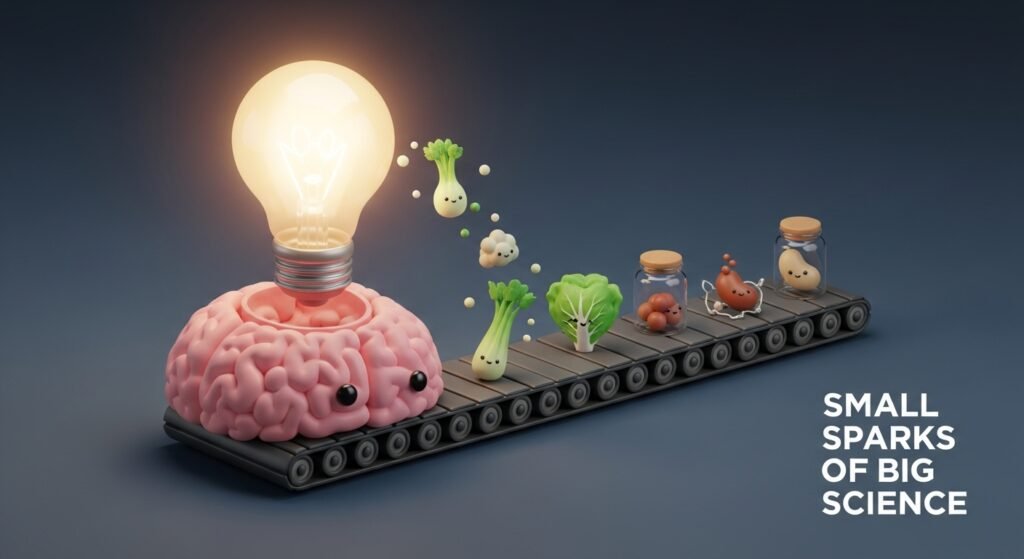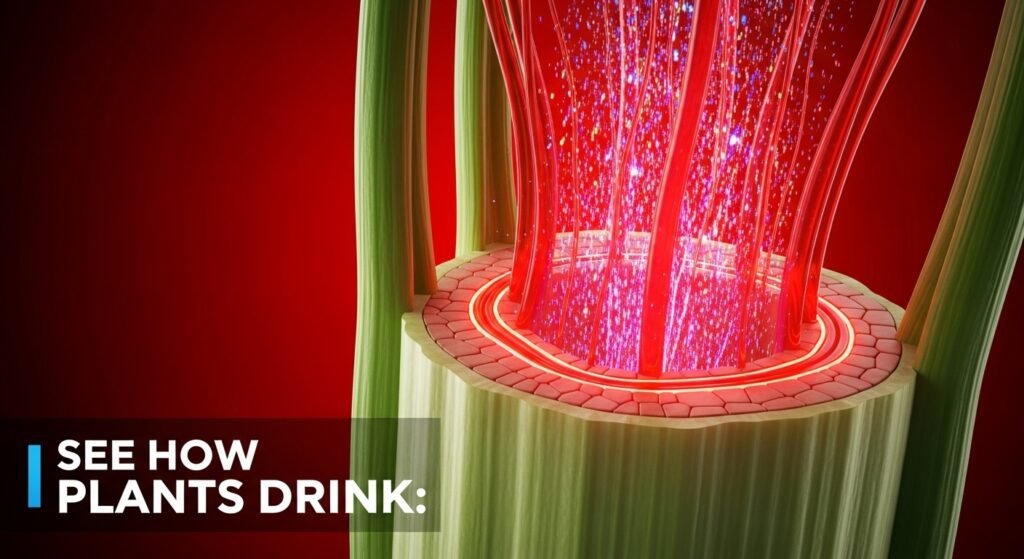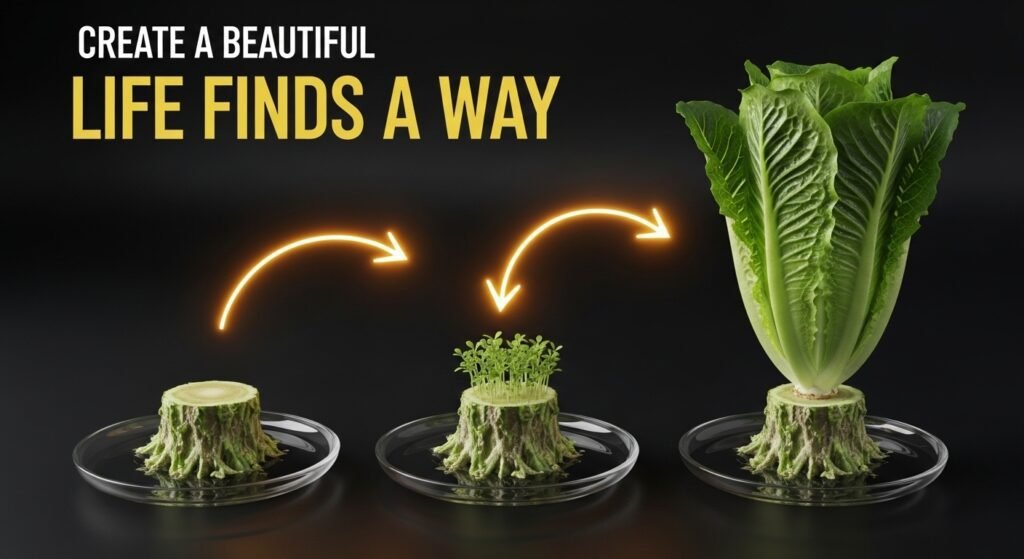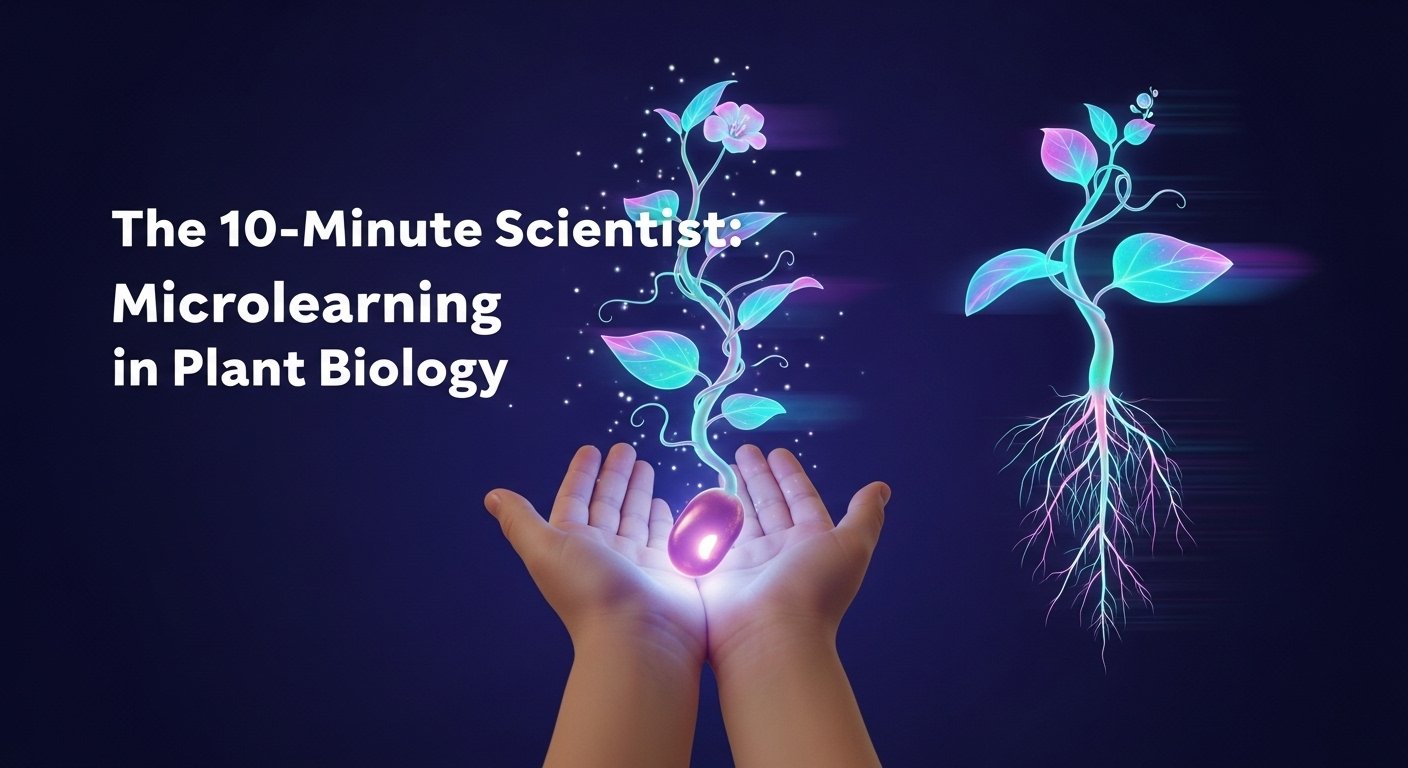The 10-Minute Scientist: How Microlearning is Making Plant Biology Radically Fun
Do you remember the classic school science experiment? You’d take a bean, wrap it in a damp paper towel, stick it in a plastic bag, and tape it to the window. The first day was exciting! But then… you waited. And waited. By the time the bean finally sprouted, your initial burst of scientific curiosity had often fizzled out. This “hurry up and wait” model of science can be a real passion-killer. But what if there was a way to capture that initial spark and turn it into a series of small, exciting discoveries? There is, and it’s called Microlearning.
In a world of TikToks and Instagram Reels, our brains are getting rewired to learn in short, focused bursts. Microlearning harnesses this reality for education. It’s the art of breaking down big, complex topics into bite-sized, engaging, and digestible chunks. When applied to plant biology, it transforms a long, intimidating science project into a series of fun, 10-minute experiments. This approach is a game-changer for home and school science, making it more accessible, less overwhelming, and way more fun for kids and teens. Forget waiting for the bean to sprout; it’s time to become a 10-minute scientist.
Best Remote Internship Programs in 2025

Why Microlearning is a Game-Changer for Science Education
Science is a subject built on “aha!” moments—those thrilling seconds when a complex idea suddenly clicks into place. The problem with traditional, long-form projects is that these moments can be few and far between, buried under long procedures and delayed results. This can lead to frustration and the mistaken belief that “science is boring.”
Microlearning is the perfect antidote. It’s designed to create a steady stream of these “aha!” moments. Here’s why it works so well:
- It Builds Momentum: A quick, successful experiment provides a jolt of confidence and curiosity, making the learner eager for the next small step.
- It Fits Modern Attention Spans: Let’s be real, focusing on one thing for an hour is tough. A 10-minute experiment is perfectly aligned with how our brains are now wired to consume information.
- It Lowers the Barrier to Entry: The thought of a month-long project can be paralyzing. The thought of a 10-minute experiment is inviting. It encourages kids to just jump in and try.
- It Focuses on One Concept at a Time: Instead of trying to teach the entire life cycle of a plant at once, a microlearning approach focuses on a single, clear concept, leading to deeper, more lasting understanding.
The Old Marathon Project vs. The New Micro-Experiment
The shift in approach is fundamental. We’re moving from a model that demands patience to one that rewards curiosity in near real-time.
| The “Marathon” Science Project | The “Microlearning” Science Experiment |
| Time Commitment: Hours to weeks. High setup effort. | Time Commitment: 5-15 minutes. Low setup effort. |
| Results: Delayed, sometimes taking weeks to observe. | Results: Often immediate or observable within a day or two. |
| Learning Goal: Broad and comprehensive (e.g., “Study plant growth”). | Learning Goal: Narrow and focused (e.g., “See how plants drink water”). |
| Engagement: Can wane over time, leading to boredom. | Engagement: High and immediate, providing quick wins. |
| Risk of Failure: Higher. If one step goes wrong early on, the whole project can fail. | Risk of Failure: Lower. It’s easy to reset and try again. |
Export to Sheets
This table shows that while long-term projects have their place, the Microlearning model is far better at igniting and sustaining a passion for science.
Your At-Home Micro-Laboratory: 4 Fun Plant Biology Experiments
Ready to become a 10-minute scientist? Here are four simple but mind-blowing experiments that use common household items. Each one is a perfect example of microlearning in action.

1. The Thirsty Celery: See How a Plant Drinks
The Big Question: How does water get from the roots of a plant all the way up to the leaves?
Your Mission (The 10-Minute Experiment):
- Take a stalk of celery, preferably one with some leaves still on top.
- With an adult’s help, trim about an inch off the bottom.
- Fill a glass or jar with water and add 10-15 drops of dark food coloring (blue or red works best).
- Place the celery stalk in the colored water.
- Now, you observe! Check it after 10 minutes, 30 minutes, and a few hours.
The Science in 60 Seconds (The Micro-Lesson): You’ll start to see the colored water creeping up the celery stalk and into the leaves. This is called transpiration, and it’s how plants “drink.” Plants have tiny tubes called xylem that act like straws, pulling water up from the roots to the rest of the plant. You are seeing those xylem straws in action!
Level Up (The Next Micro-Lesson): What happens if you take the celery stalk out and carefully slice it in half? Can you see the colored dots that are the xylem tubes? Try this experiment with a white flower, like a carnation. Does it change color?
Best Remote Internship Programs in 2025

2. The Regrowing Lettuce: Create a Clone!
The Big Question: Can you grow a whole new plant from just a piece of an old one?
Your Mission (The 10-Minute Experiment):
- Take a head of romaine lettuce and, with an adult’s help, chop off the bottom two inches (the part you wouldn’t normally eat).
- Place this lettuce stump in a shallow bowl or saucer.
- Add about half an inch of water to the bowl.
- Place the bowl in a sunny spot, like a windowsill.
- Your only job for the next week is to observe for 2 minutes a day and make sure the water level stays the same.
The Science in 60 Seconds (The Micro-Lesson): Within a few days, you will see new, tiny green leaves sprouting from the center of the stump! This is a form of asexual reproduction called vegetative propagation. The base of the lettuce contains all the genetic information needed to regrow a new plant—you’ve essentially created a clone! Many plants can do this, which is how gardeners can take cuttings to grow new ones.
Level Up (The Next Micro-Lesson): Can you do this with other vegetables? Try the same experiment with the bottom of a green onion, a celery stalk, or even the top of a carrot. Which ones regrow the fastest?
3. The Speedy Seed: Germination in a Jar
The Big Question: What does a seed actually do when it starts to grow?
Your Mission (The 10-Minute Experiment):
- Take a clear glass jar.
- Ball up a few paper towels and place them inside the jar so they fill the space.
- Wedge a few large seeds (like a bean, pea, or corn kernel) between the paper towel and the glass on the side of the jar. This lets you see everything!
- Slowly add water to the paper towels until they are damp but not soaking wet.
- Place the jar in a warm spot and observe for a few minutes each day.
The Science in 60 Seconds (The Micro-Lesson): You’re watching germination in real-time! First, the seed will absorb water and swell up. Then, you’ll see the first root (the radicle) emerge and grow downwards, searching for water. A few days later, the first shoot (the plumule) will appear and grow upwards, searching for light. This microlearning setup allows you to see both the roots and the shoots, something you can’t see when a seed is planted in soil.
Level Up (The Next Micro-Lesson): Place one jar in a warm, sunny spot and another in a cool, dark spot. Does the location affect how fast the seeds germinate? What happens if you turn the jar on its side after the root and shoot have started growing?
4. The Cabbage Chemist: A Natural pH Test
The Big Question: How does the soil’s health affect the plants that grow in it?
Your Mission (The 10-Minute Experiment):
- With an adult’s help, chop up a few leaves of red cabbage and place them in a blender with a cup of water. Blend until smooth.
- Strain the purple liquid into a jar. This is your pH indicator!
- Pour a small amount of your purple indicator into a few clear cups.
- Now, test some household substances. Add a few drops of lemon juice (an acid) to one cup. Add a pinch of baking soda (a base) to another.
- Watch the colors change! Acids will turn the indicator pink/red, while bases will turn it blue/green.
The Science in 60 Seconds (The Micro-Lesson): You’ve just used a natural chemical from a plant to test for acids and bases! This is directly related to plant biology because the pH of soil (whether it’s acidic or basic) determines which nutrients a plant can absorb. Some plants, like blueberries, love acidic soil, while others, like asparagus, prefer more alkaline (basic) soil. The cabbage’s color comes from a pigment called anthocyanin, which changes its structure and color in response to pH. You can learn more about soil pH from resources like the Soil Science Society of America.
Level Up (The Next Micro-Lesson): Carefully collect a small soil sample from your backyard. Mix it with some water, let it settle, and then add some of your cabbage indicator to the water. Is your soil acidic or basic?
Building a Habit of Curiosity
The real goal of Microlearning in science is not just to teach a few cool facts. It’s to build a lasting habit of curiosity. It’s about teaching kids and teens to look at the world around them and ask, “Why?” and “How?”
My own journey with this started with a failed attempt to grow an avocado from a pit. I followed the instructions—sticks, water, etc.—and then I waited for months. Nothing happened, and I gave up. Years later, I tried again, but with a microlearning mindset. This time, I wasn’t just waiting for a tree. My daily “micro-mission” was to observe: to check the water level, to look for the tiniest crack in the seed, to notice the subtle changes. By focusing on the small, daily discoveries, the process became a reward in itself. The a-ha moments were not delayed; they were daily.

Conclusion: A Universe in Your Backyard
You don’t need a fancy laboratory to be a scientist. The world’s most fascinating biology experiments are happening all around you—in your kitchen, in your backyard, and on your windowsill. Microlearning is the key that unlocks this hidden world. It empowers you to ask big questions and find the answers through small, fun, and manageable discoveries.
By embracing the spirit of the 10-minute scientist, you are doing more than just learning about plants; you are cultivating a lifelong habit of curiosity, observation, and wonder. So go ahead, grab a celery stalk, and let the discovery begin.
What’s something in your own kitchen or backyard that you’re curious about? Let’s brainstorm a fun micro-experiment for it in the comments below!



